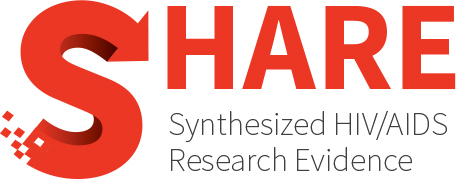Category Archives: People who use drugs
Availability, accessibility, and coverage of needle and syringe programs in prisons in the European Union: A multi-stage scoping review
Needle and syringe programs (NSPs) are among the most effective interventions to control infection transmission among people who inject drugs in prisons. This review aimed to evaluate the availability, accessibility,...
Association of nitrite inhalants use and unprotected anal intercourse and HIV/syphilis infection among MSM in China: A systematic review and meta-analysis
Background Nitrite inhalant use is very common among men who have sex with men (MSM) in China. However, there is lack of national representative data on use among Chinese MSM,...
Interventions to improve HIV care continuum outcomes among individuals released from prison or jail: Systematic literature review
BACKGROUND: HIV care continuum outcomes deteriorate among people returning from incarceration. Interventions to improve care outcomes post-incarceration have been characterized by substantial heterogeneity in approach, outcome metrics, and results. A...
Community-based psychosocial substance use disorder interventions in low-and-middle-income countries: A narrative literature review
BACKGROUND: Mental health and substance use disorders (SUDs) are the world’s leading cause of years lived with disability; in low-and-middle income countries (LIMCs), the treatment gap for SUDs is at...
Methadone maintenance therapy service components linked to improvements in HIV care cascade outcomes: A systematic review of trials and observational studies
BACKGROUND: The beneficial links between engagement in methadone maintenance therapy (MMT) and HIV treatment outcomes have been extensively described. Nevertheless, people who use drugs (PWUD) continue to experience suboptimal HIV...
Review of sexualized drug use associated with sexually transmitted and blood-borne infections in gay, bisexual and other men who have sex with men
PURPOSE: The aim of the present study was to quantify associations between sexualized drug use (SDU) and sexually-transmitted and blood-borne infection (STBBI) diagnoses in gay, bisexual and other men who...
Systematic review and meta-analysis of global prevalence of HBsAg and HIV and HCV antibodies among people who inject drugs and female sex workers
The main objective of this study was to evaluate the prevalence of human immunodeficiency virus/acquired immunodeficiency syndrome (HIV/AIDS), hepatitis C virus (HCV) and hepatitis B virus (HBV) and their co-infections...
Global prevalence of HCV and/or HBV coinfections among people who inject drugs and female sex workers who live with HIV/AIDS: A systematic review and meta-analysis
Coinfections of hepatitis C virus (HCV) and/or hepatitis B virus (HBV) with human immunodeficiency virus/acquired immunodeficiency syndrome (HIV/AIDS) are associated with high morbidity and mortality and poor prognosis. The main...
Injecting risk behaviours amongst people who inject drugs: A global multi-stage systematic review and meta-analysis
BACKGROUND: Injecting risk behaviour, such as receptive sharing of injecting equipment and/or re-using one’s equipment, is associated with bloodborne virus transmission and infections in people who inject drugs (PWID). We...
mHealth and opportunities in anti-retroviral adherence in HIV, a diverse group of patients with diverse and unique opportunities: A narrative review
BACKGROUND: Antiretrovirals (ARVs) are key in the management of human immunodeficiency virus (HIV). While no cure exists, ARVs help patients live healthy lives and prevent transmission to others. However, adherence...
Factors associated with HIV testing among people who inject drugs: A meta-analysis
HIV testing is the first step to early identification, treatment and management of HIV infection among people involved in high-risk behaviors specifically drug injection. Achieving declines in morbidity and mortality...
Factors associated with injecting-related risk behaviors among people who inject drugs: A systematic review and meta-analysis study
We conducted this systematic review and meta-analysis study to better understand the factors (being drug use, drug type (methamphetamine vs others), sex partner, frequency of injection, homelessness and being HIV...
